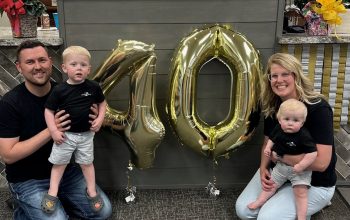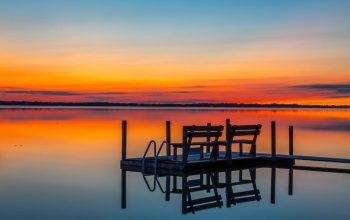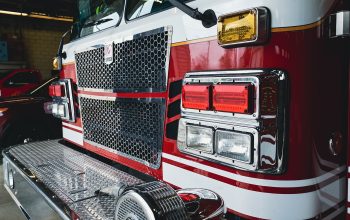63 years ago today, a Beech-Craft Bonanza soared across the snowy skies and frigid temperatures from Mason City, Iowa. Within minutes, the plane went down and crashed in Clear Lake, Iowa, killing the pilot and all three passengers. This day would forever be known as “The Day The Music Died”. Now, at first my plan was to write about a different band for the second episode of Timeless Music Mentions, but I realized February 3 fell on a Thursday, and I just couldn’t not write about my second favorite artist of all time, whom I wrote a biopic screenplay for last year. This man broke the boundaries of how a rockstar could or should look like, sound like, and inspired some of the most popular bands of all time from the British Invasion, such as The Beatles and The Rolling Stones. This man formed the first self-contained rock’n’roll group ever, in which nearly every band would follow this formula: lead singer, lead guitarist, lead bass player, drummer. Elivs Presly is known as the KING of rock and roll, but let me tell you something that Sir Paul McCartney has said himself… “Buddy Holly is the FATHER of rock and roll.”
CHARLES HARDIN HOLLEY “Why is he known as Buddy?” might be one of the most popular and/or first questions asked about him. Born on September 7, 1936 in Lubbock, Texas as Charles Hardin Holley to parents Lawrence Odell “L.O.” Holley and Ella Holley, he was the youngest of four children. His siblings were (in order from oldest to youngest) Travis, Larry, Patricia, and the youngest of the four…Charles. Since he was the youngest of four, Ella Holley hated using the name Charles because he was the youngest, and she felt the name was too old for him. So, Ella decided to appoint a more accurate name to the baby of the family, calling him Buddy. During his early teenage years, Buddy was told he needed glasses because of his terrible eyesight. However, the young Buddy had NO intentions on wearing glasses. At the time, people who wore glasses were made fun of and viewed as “nerdy”. Though Buddy needed glasses, he didn’t want to be portrayed that way and made fun of. Instead, he decided to use the newly invented contact lenses. It was perfect! Rather than getting made fun of, Buddy could just wear contact lenses and no one would know. There was just one problem. The brand new contact lenses were super uncomfortable and irritating.
BUDDY HOLLY & THE CRICKETS With his glasses shining on his face, he formed his band, Buddy Holly & The Crickets with Buddy on lead guitar and vocals, Jerry “J.I.” Allison on drums, Joe B. Mauldin on bass, and Nikki Sullivan on backup guitar. Buddy worked with a variety of different musicians to play with like Bob Montgomery, Sonny Curtis, etc. The band worked under the obsessive and selfish manager, Norman Petty, who, some say, inevitably became the cause of Buddy's death. The group came up with the name “Crickets” when Jerry Allison looked through a book of insects. Ironically, they must’ve passed by “beetle” as they reached “cricket”. The guys decided to go with the “crickets”. What made the name even more of a guarantee was when they recorded the song “I’m Gonna Love You Too” because at the end, you can hear crickets chirping. When the band heard that, they decided to keep it in the song. How fitting. While performing with the Crickets, Buddy’s last name was spelt incorrectly, and instead as “Holly”. Buddy decided to roll with it. It must’ve been a sign since even on his birth certificate his last name was spelt the same, incorrect way. To most, however, as Buddy’s fame grew, “Holly” became the correct spelling. Even when Buddy performed, he would toss his glasses away. No rockstar wore glasses at that time, but no matter how hard he tried, it was clear his glasses had to be on. During one of their early gigs, Buddy’s glasses were absent from his face. During the gig, Buddy dropped his guitar pin and, since he was almost blind without his glasses, he kneeled, searching for his guitar pin. That was the last time he performed without his glasses. Buddy Holly & The Crickets released a number of hits together such as “Peggy Sue”, “Oh Boy!”, “Everyday” and so much more. Their biggest hit, a hit that took far too long to jump to the #1 spot was their classic “That’ll be the Day”. “That’ll be the Day” was written by Buddy and Jerry Allison. The two went to the theater to watch the movie, “The Searchers” starring John Wayne. Throughout the movie, John Wayne repeated the line “that’ll be the day.” This inspired Buddy and Jerry as they penned the classic hit that night. Another classic hit from Buddy Holly & The Crickets was the catchy, enjoyable hit, “Peggy Sue”. During one of their car rides where they sang while cruising through the streets of Lubbock, Buddy created the riff of “Peggy Sue”. Originally meant to be titled, “Cindy Lu” after Buddy’s niece, Jerry Allison asked to change the name to “Peggy Sue” after his ex-girlfriend, whom he would eventually marry. The name was switched, and for the better, as the song became a classic hit from the band.
THE PETTY NORMAN PETTY After some time, Nikki Sullivan left the band because of their excessive touring. The band became what most people remember today, as the trio of Buddy Holly, Joe B., and JI. You’d think the three would be making their money, but because of Norman Petty, the three were told to send their money back to him in Clovis, New Mexico. Even their songs, such as “That’ll be the Day” which was written solely by Buddy and JI, received writing credits from Norman Petty. Petty took over the band, and took advantage of the fact that they were young and naive. Deceiving them, Petty, though letting them use his recording studio, took most of their money owed to them. Nikki Sullivan had called Buddy on the phone at some point, complaining to him that Petty never paid Sullivan the royalties owed to him. This became a pattern over the years, and Buddy didn’t like it. Buddy confronted his bandmates after one performance, ordering them to NOT send their money back to Norman Petty. And so they did. Finally, the trio enjoyed themselves as they even purchased Harley Davidsons after their endless, exhausting tours. The trio were enjoying themselves finally. Because of this, Buddy spoke with the band about finally leaving Norman Petty.
BETRAYAL Buddy Holly married a Puerto Rican-American, Maria Elena, in 1958. Buddy moved to New York where the newlyweds enjoyed themselves. Meanwhile, JI and Joe B. remained in Lubbock, Texas. Buddy persuaded the two to move to New York with him where they could work under Murray Deutsch, who they were very fond of. Everything was set. While Buddy drove back to Lubbock, Texas with Maria, JI and Joe B. decided to fly. The two Crickets arrived before Buddy did, which wasn’t a good thing. When they arrived, somehow Norman Petty talked them out of moving to New York with Buddy. When Buddy arrived, he was told the news. After the livid Buddy confronted Petty and his former bandmates, he stormed out. Just like that, Buddy Holly & The Crickets was over.
AFTERMATH The end of Buddy Holly & The Crickets affected Buddy financially and emotionally. Like Nikki Sullivan, Petty never returned Buddy’s owed royalties to him. Living in New York, much more expensive than Lubbock, Texas, Buddy struggled to pay for rent. Embarrassed, Buddy had to ask Maria’s aunt, who lived in the same apartment building, for money to help pay the rent. Remember when I said some believe that Petty was the inevitable cause for Buddy’s death? Well, because Petty never delivered Buddy’s owed royalties, and since the lawsuits filed on Petty were far too difficult to handle for Buddy’s lawyer, he became desperate. Buddy turned to Irvin Feld. Irvin Feld organized a tour for Buddy, where he could make quick money to help him financially. This became The Winter Dance Party, where The Big Bopper, Ritchie Valens, Dion & The Belmonts, and Frankie Sardo joined. Buddy needed a band, however. So he recruited Waylon Jennings, who was already mentoring at the time, Tommy Allsup, and Carl Bunch. This Winter Dance Party was meant to be an easy, quick way to get some cash. However, the story didn’t have a happy ending for Buddy Holly, or Ritchie Valens and Big Bopper. Today, 63 years ago, a Beech-Craft Bonanza plane soared across the snowy skies and frigid temperatures from Mason City, Iowa. Within minutes, the plane went down and crashed, killing the pilot and all three passengers. This day would forever be known as “The Day The Music Died”. Years later, Sir Paul McCartney bought out the Buddy Holly catalogue from Norman Petty. After the takeover, Nikki Sullivan finally received the royalties owed to him. And perhaps the saddest part of the entire story, years after Buddy’s death, Maria Elena finally got the money owed to Buddy that Norman Petty kept. The amount received would have been enough for Buddy Holly to avoid the desperation of joining the Winter Dance Party, saving his life, and very possibly the lives of pilot Roger Peterson, The Big Bopper, and Ritchie Valens.
“Girl On My Mind” and “Oh Boy!” were the first two songs that introduced me to Buddy Holly and snatched my interest, though it all began when my dad told me a story about how he sang a parody of “Oh Boy!” for a school project when he was a kid. As for my top five favorite Buddy Holly songs…this is definitely one of the hardest lists I’ve done. But here they are, starting from five: (5) “Words of Love” (4) “It Doesn’t Matter Anymore” (3) “Rave On” (2) “Now We’re One” (1) “True Love Ways”.
Thank you for reading! Tune in next week, as we’ll be discussing the band whose frontman inducted Buddy Holly into the Rock and Roll Hall of Fame in 1986. sports@wrightcountymonitor.com



